main |
sidebar

The Hungarian Parliament Building is the headquarters of the National Assembly of Hungary, one of the oldest legislative buildings in Europe, a notable landmark of Hungary and a popular tourist destination of Budapest. It is located in Lajos Kossuth Square on the banks of the Danube in Budapest. It is currently the largest building in Hungary.
History:
Budapest joined from three cities in 1873 and seven years after the diet resolved to establish a new building, representatives of Parliament, expressing the sovereignty of the nation. An international competition was held, and Imre Steindl victorious, plans for two other competitors later also realized in the form of the Ethnographic Museum and the Hungarian Ministry of Agriculture, which are facing the Parliament building.

The construction of the winning plan was started in 1885 and the building was opened in the 1000 anniversary of the country in 1896 and completed in 1904.
Nearly a thousand people participated in the construction, during which 40 million bricks, half a million precious stones and 40 kilos (88 lb) of gold were used. After World War II became the diet of a single camera and now the government uses only a small part of the building.
During the communist regime a red star located at the top of the dome, but was eliminated in 1990. Szura Mayas said the Republic of Hungary from the balcony to Lajos Kossuth Square on October 23 in 1989.
Upon entering Parliament, visitors can walk to great ornamental stairs, see frescoes on the ceiling and go through the bust of the creator, Imre Steindl, in a niche in the wall. Other statues are those of Arpad, and John Hunyadi Stephen.
One of the famous parts of the building is hexagonal central decagonal hall with large adjacent chambers that: the Chamber of Deputies and the Senate (until 1945). The Holy Crown of Hungary, which is also represented in the coat of arms of Hungary, has been exhibited in the central hall since 2000.
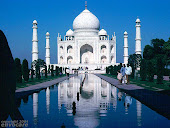
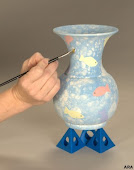


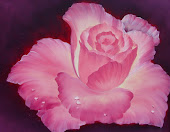
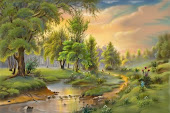


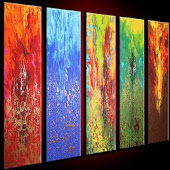

Monday, October 31, 2011

The Hungarian Parliament Building is the headquarters of the National Assembly of Hungary, one of the oldest legislative buildings in Europe, a notable landmark of Hungary and a popular tourist destination of Budapest. It is located in Lajos Kossuth Square on the banks of the Danube in Budapest. It is currently the largest building in Hungary.
History:
Budapest joined from three cities in 1873 and seven years after the diet resolved to establish a new building, representatives of Parliament, expressing the sovereignty of the nation. An international competition was held, and Imre Steindl victorious, plans for two other competitors later also realized in the form of the Ethnographic Museum and the Hungarian Ministry of Agriculture, which are facing the Parliament building.

The construction of the winning plan was started in 1885 and the building was opened in the 1000 anniversary of the country in 1896 and completed in 1904.
Nearly a thousand people participated in the construction, during which 40 million bricks, half a million precious stones and 40 kilos (88 lb) of gold were used. After World War II became the diet of a single camera and now the government uses only a small part of the building.
During the communist regime a red star located at the top of the dome, but was eliminated in 1990. Szura Mayas said the Republic of Hungary from the balcony to Lajos Kossuth Square on October 23 in 1989.
Upon entering Parliament, visitors can walk to great ornamental stairs, see frescoes on the ceiling and go through the bust of the creator, Imre Steindl, in a niche in the wall. Other statues are those of Arpad, and John Hunyadi Stephen.
One of the famous parts of the building is hexagonal central decagonal hall with large adjacent chambers that: the Chamber of Deputies and the Senate (until 1945). The Holy Crown of Hungary, which is also represented in the coat of arms of Hungary, has been exhibited in the central hall since 2000.
Monday, October 10, 2011
Animation is the rapid display of a sequence of images of 2-D or 3-D artwork or model positions to create an illusion of movement. The effect is an optical illusion of motion due to the phenomenon of persistence of vision, and can be created and demonstrated in several ways. The most common method of presenting animation is as a film or video program, although other methods.
Claymation or animation laminates often abbreviated as Claymation, uses figures of clay or a similar malleable material to create stop-motion animation. The figures may have a wire frame or truss within them, similar to puppet animation related to (below), which can be manipulated to represent the figures. Moreover, the figures can be made entirely of clay, as in the films of Bruce Bickford, where clay creatures transformed into a variety of ways.

Examples of clay-animated works include The Gumby Show (U.S. 1957-1967) Morph shorts (UK, 1977-2000), Wallace and Gromit shorts (UK, from 1989), Jansvankmajer of Dimensions of Dialogue (Czechoslovakia, 1982), The Trap Door (UK, 1984). Films include Wallace & Gromit: The Curse of the vegetables, Chicken Run and The Adventures of Mark Twain.
Claymation or animation laminates often abbreviated as Claymation, uses figures of clay or a similar malleable material to create stop-motion animation. The figures may have a wire frame or truss within them, similar to puppet animation related to (below), which can be manipulated to represent the figures. Moreover, the figures can be made entirely of clay, as in the films of Bruce Bickford, where clay creatures transformed into a variety of ways.

Examples of clay-animated works include The Gumby Show (U.S. 1957-1967) Morph shorts (UK, 1977-2000), Wallace and Gromit shorts (UK, from 1989), Jansvankmajer of Dimensions of Dialogue (Czechoslovakia, 1982), The Trap Door (UK, 1984). Films include Wallace & Gromit: The Curse of the vegetables, Chicken Run and The Adventures of Mark Twain.
;;
Subscribe to:
Posts (Atom)
Tajmahal Paintings

Painting Iteams

Creation of Paintings

Painting Equipments

Beautiful Rose Painting

Green Nature Painting

Canvas Painting

Pictute of Artist

Color Paintings

Online Paintings
